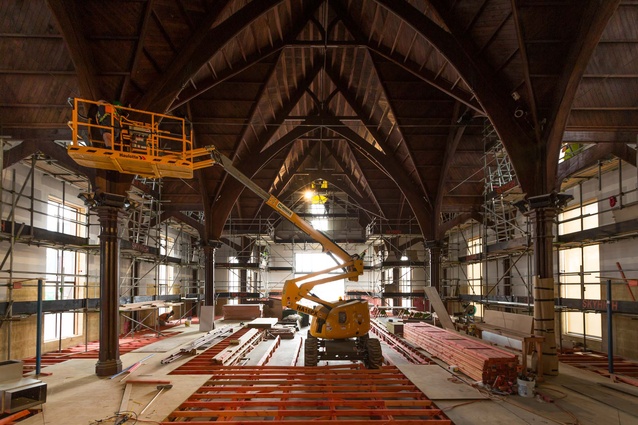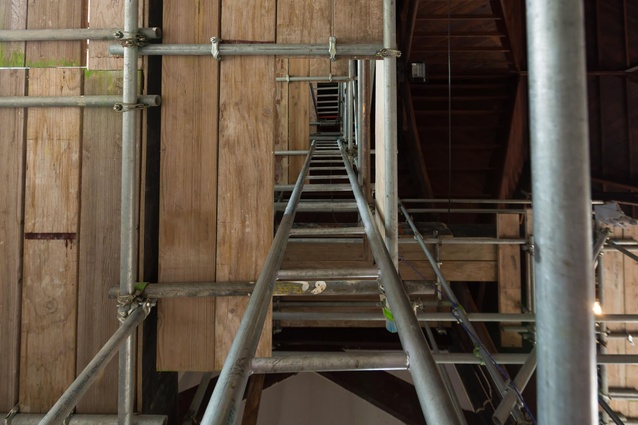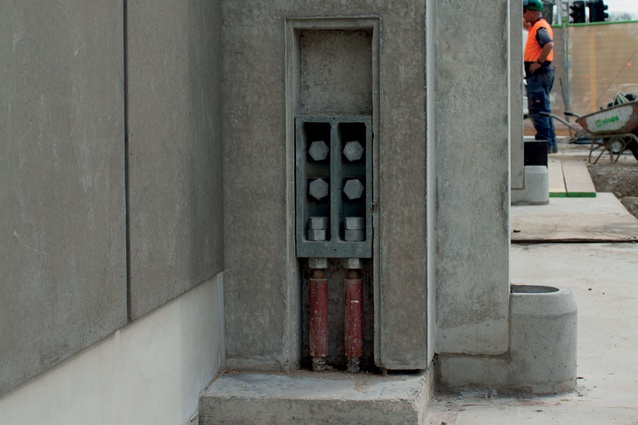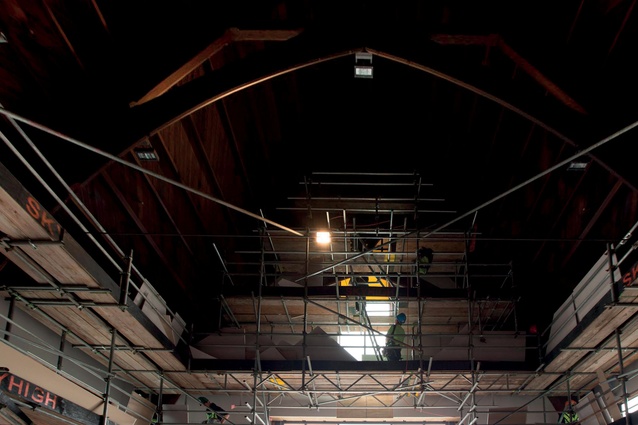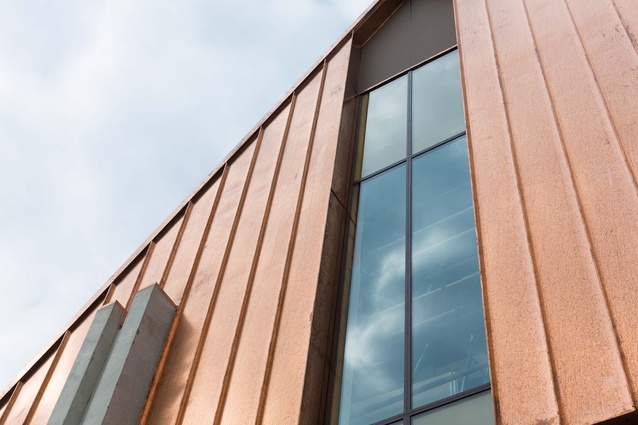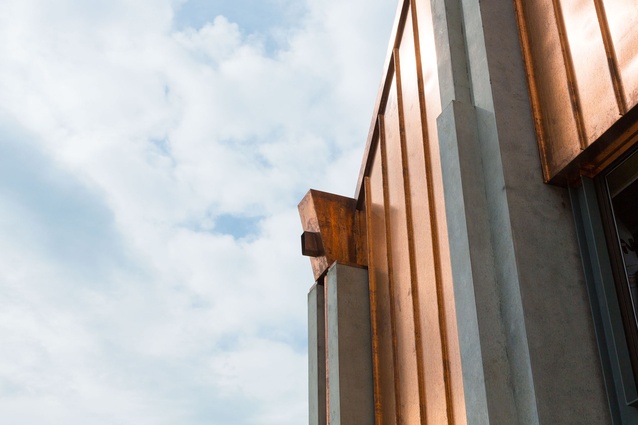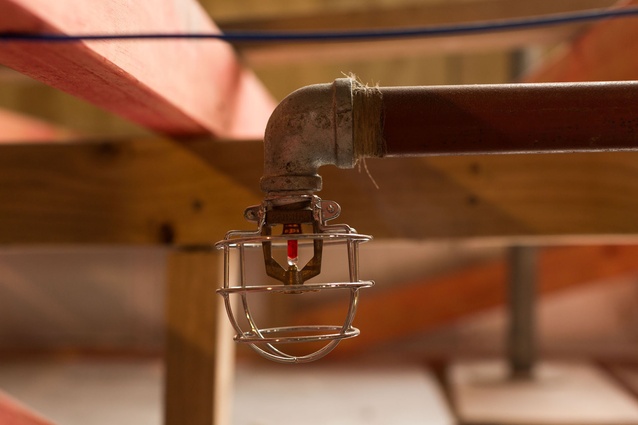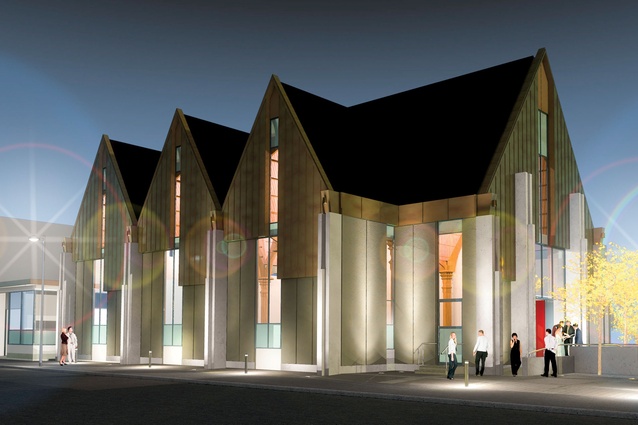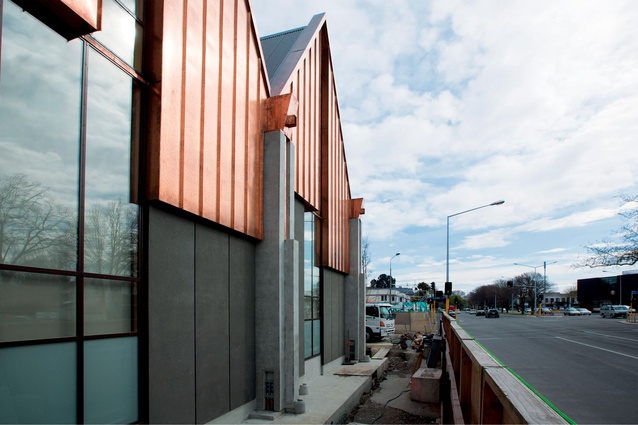Rising again
Completed in 1902, the original triple-gabled Knox Church on the corner of Bealey Avenue and Victoria Street in central Christchurch was a neo-gothic brick bastion. However, while it was a prominent building on an acute corner, it was also a private building designed for religious gatherings to be held separate from the outside world. Tall sills and obscure coloured glass in the windows meant passers by were unable to see in.
That is, until the February 22 earthquake, which rendered the church unusable and in a frail state. Century-old bricks fell, limestone cracked, and its timber skeleton was exposed to the world – for more than two years. In that time, a specially installed system shed light on what remained of the church’s soaring interior rich dark timber at night; glowing from the inside, the church stood, as a symbol of what once was.
The technically challenging 13-month rebuild of the church came at a cost of $5.5 million; in 1902, it was built for 3418 pounds.
Wilkie and Bruce architect, Alun Wilkie, who designed the modern interpretation of the heritage church, said all remaining brickwork that hadn’t fallen had to be removed. “Because the engineers couldn’t permit the church to be rebuilt in the original style [due to the current Building Code requirements], we had to come up with a totally new building, which would clamp around the heritage remnants that remained. What we have ended up with is a completely unique building.”
Many of the design decisions were based on the clamour for a more transparent design, after the building’s stunning interior became visible. “As a result, it has been rebuilt with much larger windows going right down to floor level, and a large new glazed entry point on the west end of the building on Victoria Street,” Wilkie said.
Brick buttresses supported the original church. The engineering of their concrete replacements is believed to be a world-first, and proved to be one of the most technically challenging aspects of the design and construction of the new ecclesiastical building.
Aurecon structural engineer David Elliott said the church was braced by the 14 new buttress columns, which connected to the roof structure via a steel ring beam. “The building design is based around low-damage design principles … we want the building to be able to withstand future earthquakes but with minimal structural damage and consequential damage to the building,” he said.
This was achieved by designing the buttress columns as ‘rocking’ columns. The buttresses are post-tensioned to the foundations with high-tensile 20-tonne wires that run through the middle of the columns. Energy dissipaters at the base of the buttresses absorb seismic energy while the post tensioning restores the buttresses to a vertical position following an earthquake. The dissipaters are easily accessible and replaceable. In addition, shear keys at the base of the buttresses provide resistance to the horizontal movement of the buttresses while they rock.
The buttresses were all precast and post-tensioned off site, and ranged in height from 6.3 metres to 8.3 metres; each weighed up to 13 tonnes. A 250-tonne crane was utilised to lift the massive weight of each buttress column; roads were closed around the tight site while they were lifted over the church and into place.
Once in position, foundation blocks that were post-tensioned to the columns’ bases off site were tied into the raft foundation.
A new plywood roof, installed over the existing sarked roof. transfers inertial and wind forces to the steel ring beam and buttress columns. Steel tie rods connect the buttresses across and along the building.
The original church floor was dug out and a new concrete foundation was poured, Higgs Construction site manager Kris Jolly said. Once this was completed, the roof was re-propped from the interior off the floor slab. “Forty tonnes of steel went into the foundation, and about 100m3 of concrete.
But it was not just the columns that proved complex in this build: it was combining the heritage elements with contemporary additions. “Where old meets new is always a challenge,” Jolly said. “Dealing with something that is 100 years old is one thing, but this structure had also been shaken by earthquakes so elements of it weren’t as straight or aligned as they once were.”
Retaining the original roof structure was a challenge in itself: it had to be kept structurally stable in its temporary condition, and safe to work under. “The existing roof structure was not square and vertical either due to the original construction, or from earthquake damage,” Elliott said. “Some adjustment to the roof was made where possible to better align the new structure with the existing; some replacement of rotten timber was required to restore the structural integrity of the building.”
For the construction team, the roof was a particular challenge: it has a 60-degree pitch that meant extremely careful planning was required for the installation of the new roof – the old iron was removed from the roof’s exterior and it was covered with a bracing ply before new rafters, purlins and iron were added.
Clad in copper and charcoal-coloured concrete, this contemporary take on the iconic heritage church retains many of the original’s distinctive interior elements: tongue-and-groove Rimu flooring, ‘Wainscot’ paneling and the refurbished organ, albeit in a new organ loft.
It was a project that, for all involved, offered many challenges, but an unusual level of satisfaction. As Jolly said: “That’s part of working on a site like this. It’s wonderful to have been a part of. This church is an icon, and it will be here for a very long time to come.”

